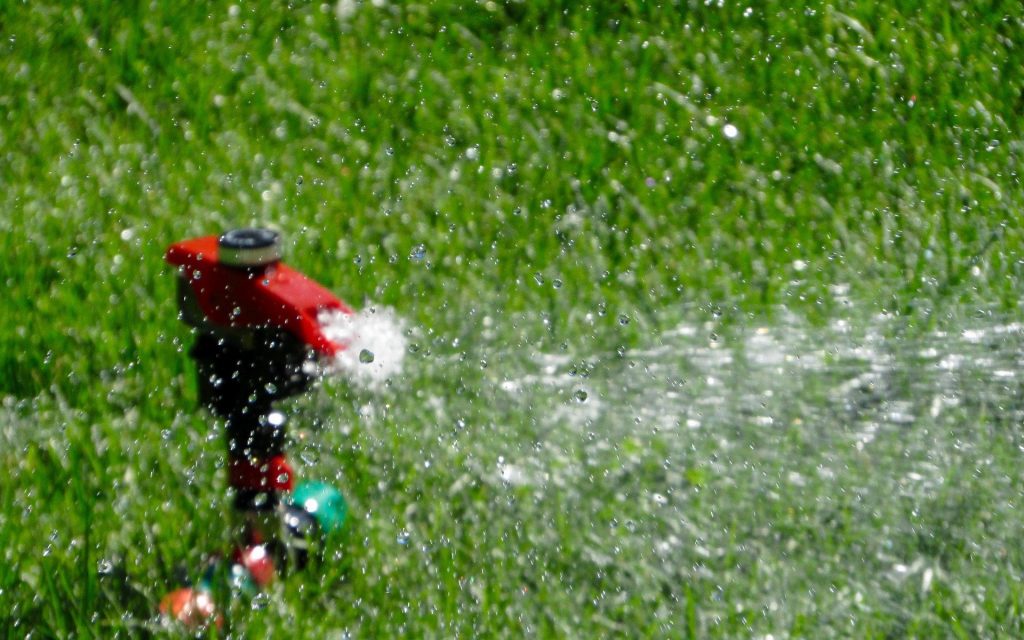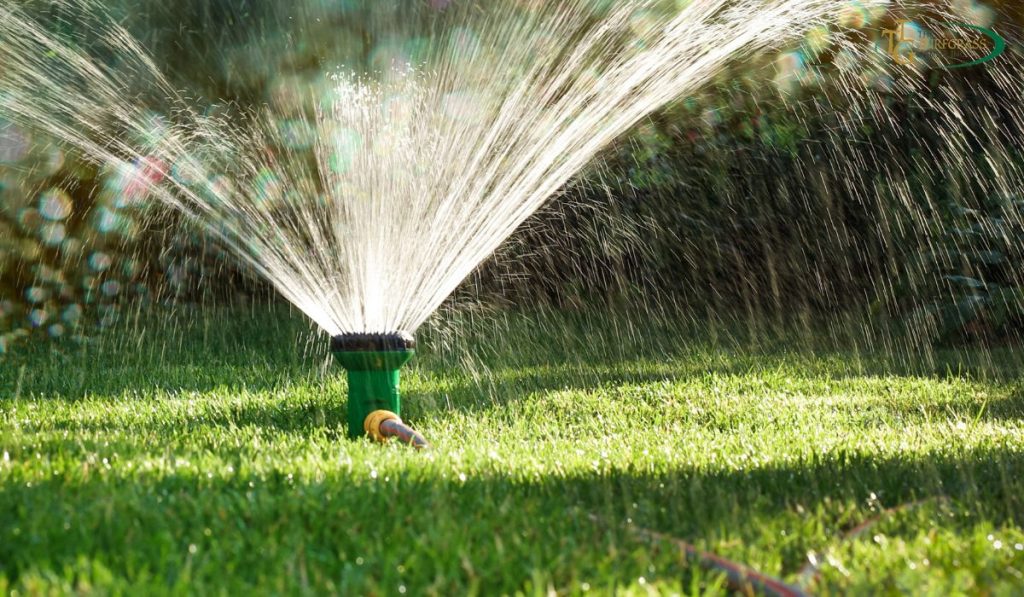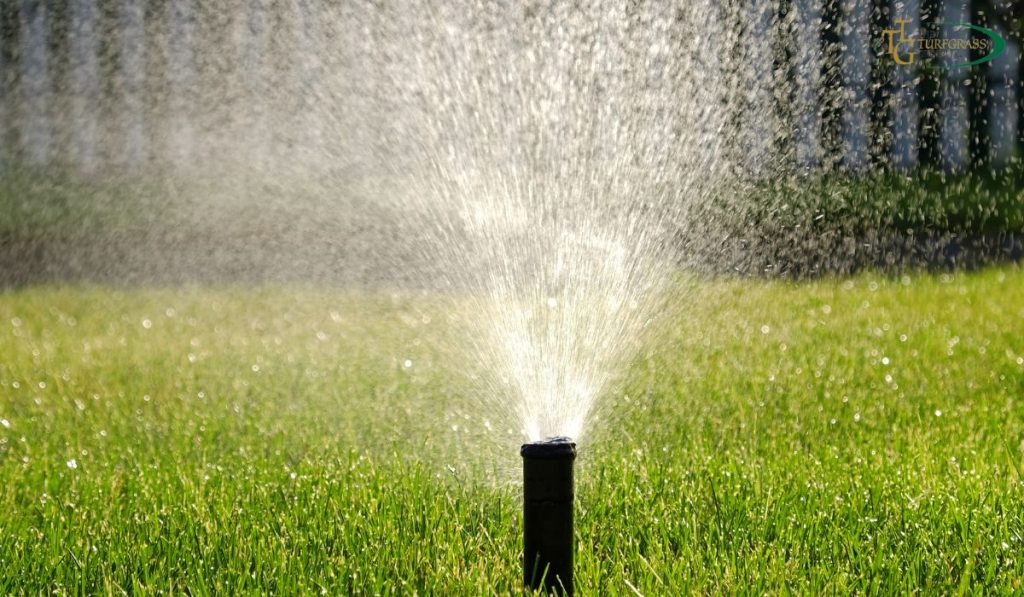
Watering your lawn seems like a simple enough task.
How to Get the Most Out of Watering Your Lawn Turn on the sprinkler, do something else, and come back in a little while to turn it off again.
But like most things about caring for your lawn, the simplicity can be deceptive.
While essential watering takes little thought or consideration, getting the most out of your yard means paying more attention.
If you want your property to look its best all season long, pay attention to your watering.
It isn’t rocket science, but planning can make a huge difference.
How Often Should I Water My Lawn?
One of the most common questions about lawn care is how often to water.
Some lawn care specialists are content to tell you to water once a week and leave it at that.
But we’re interested in great lawns, not just reasonable grounds.
It would help if you determined your lawn needs to get the best out of your property.
Not all turf is the same, and not every yard is the same.
Many factors affect how often you should water your lawn.
Of course, the current weather is one of the most significant factors.
You can water your lawn less or skip watering altogether when it rains.
There’s no need to rinse beyond what Mother Nature provides.
The temperature is also significant.
In hotter weather, soil dries out more quickly, and your lawn needs more water. Other factors include:
- The type of soil you have.
- The amounts of sun and shade in your yard.
- Even the slope of your property.
One inch a week is the most generic answer to how often to water your lawn. That can come from rain or irrigation.
However, you may need to water twice a week in hot weather.
For sandy soil, a single soak every week is sufficient; for soil with more clay in it, water is applied in two sessions.
First, water for about 30 minutes, then let the water soak in.
Then, water for another 30 minutes.
Soil with a high clay content absorbs water slower than sandier soil.

Watering immediately will result in lots of runoff and reduced water penetration.
How Much Water Does My Turf Need?
Most turf needs one to one-and-a-half inches a week.
But to be more specific, you need to do a soil test.
Root systems grow six inches deep with warm-weather grasses like zoysia grass and bermudagrass.
They do best with less frequent, deeper watering.
Once a week, you should water until the top six inches of soil are moist.
Sticking a long-blade screwdriver into the ground is the easiest way to test for moisture.
The screwdriver should easily slide six inches into the soil.
If the soil becomes hard to pierce less than six inches deep, you need more water.
You can water twice weekly in drought conditions or hot, dry periods.
Again, water until the soil is moist to six inches.
The most accurate way to determine how long to water is to perform the soil test and time how long it takes the water to penetrate six inches.
Do this a few times and average out the time it takes.
However, there are some other tricks, too.
The tuna can method is one of the simplest ways to measure how much water your turf is getting.
Place a few clean, empty tuna cans around your lawn.
Try to reach different areas that may not receive the same amount of water.
How to Water Your Lawn
The best way to water your lawn depends on several factors.
The size and shape of your property will have a significant effect on the best method of watering.
It would help if you also considered soil conditions since some lawns will absorb water at different rates.
If your property includes differently shaded areas or slopes, you may need to account for other watering times.
Shaded areas take less time to moisten the soil.
Sloping regions of your lawn need more water since more water ends as runoff.
When watering your lawn, you need to consider watering efficiency.
It doesn’t pay—literally—to use water that isn’t going to water your turf’s roots.
Evaporation and runoff are the two most common sources of water waste.
Overwatering is another way to use more water than you need to keep your turf healthy.
To avoid losing water to evaporation, you need to consider both the time of day and the type of irrigation system.
In general, watering at the hottest times of day leads to the most water loss from evaporation.
The best time to water your lawn is early morning, before the day’s heat.
Cooler temperatures mean less evaporation.
Consider watering in the evening or even at night if cooler temperatures are best.
However, we never recommend watering any later than late afternoon.
While you don’t want to lose water to evaporation, you don’t want to leave your lawn wet for too long.
Watering in the morning gives your grass time to dry during the day.
You are drowning in the evening or after dark, leaving your lawn moist all night.
And a damp property is susceptible to fungus.
If you notice mushrooms in your yard, you are watering too much or too late.
The Best Type of Sprinkler for Watering Your Lawn
The sprinkler you choose to water your lawn can make or break your irrigation regimen.
Different types of soil and sod conditions require different types of watering.
Generally, the best sprinkler system will reach all parts of your lawn uniformly and minimize evaporation.
Pulsating or impact sprinklers are ideal for mature lawns.
The high-velocity horizontal stream covers a broad area with minimal evaporation.
Impact sprinklers are commonly used for in-ground sprinkler systems.
However, they are also available as movable systems that can be attached to the end of a hose.
You can use an impact sprinkler mounted on a tripod for even more coverage.
You can buy them online or in many home improvement and gardening stores.
Their height means a little more water is lost to evaporation.
But for a large lawn, there’s no beating the long-distance coverage.
While pulsating or impact sprinklers are great for mature lawns, new sod or newly seeded areas need a more gentle touch.
One way to gently water new turf is by hand with a hose with a sprinkler attachment.
For a less hands-on approach, you can use an oscillating sprinkler attached to the end of a hose.
An oscillating sprinkler shoots water high up in the air, so it loses more water to evaporation than other sprinklers, but the water lands more gently than other sprinklers, making it ideal for new sod.
The Right Type of Sod

When watering your lawn, it is crucial to consider your turf type.
Different types of turf will respond best to different watering regimens.
TifTuf Bermudagrass needs about one inch of water a week.
That can come from rain or irrigation. Just don’t overwater.
TifTuf Bermudagrass stands up well to drought conditions, too.
But twice-weekly watering can help keep the turf healthy when boiling and drying.
If you’re ready for a standout lawn, start with standout turf.
You can find a grower for any of our varieties here.
Conclusion
Watering your lawn may seem straightforward, but it’s an art that demands attention to detail.
The key is understanding your lawn’s unique needs, from the frequency and quantity of water to the best watering methods.
By delving into these specifics, you can elevate your lawn care routine from adequate to exceptional.
Ready to explore the best turf options for your lawn?
Contact us at The Turfgrass Group to find the perfect match for your needs.
FAQs
How Often Should I Water My Lawn?
Determining watering frequency depends on various factors like weather, soil type, and lawn characteristics. Generally, aim for about an inch of water per week but adjust based on temperature and soil.
How Much Water Does My Turf Need?
Most turf requires around one to one-and-a-half inches of water weekly. Conducting a soil test or using simple methods like the screwdriver test or tuna can help gauge moisture levels.
How to Water Your Lawn?
Consider factors like lawn size, soil type, and different lawn areas when deciding how to water. Timing matters—morning watering minimizes evaporation, while late watering can lead to fungal issues.
How long do the tuna cans fill with one inch of water?
To be sophisticated, you can use a flow meter attached to your sprinkler system. Calculate the area of your lawn and multiply the square feet by 0.62 gallons. That’s one-inch depth per square foot. Then, watch your meter to determine how long it takes to spray the necessary volume of water.